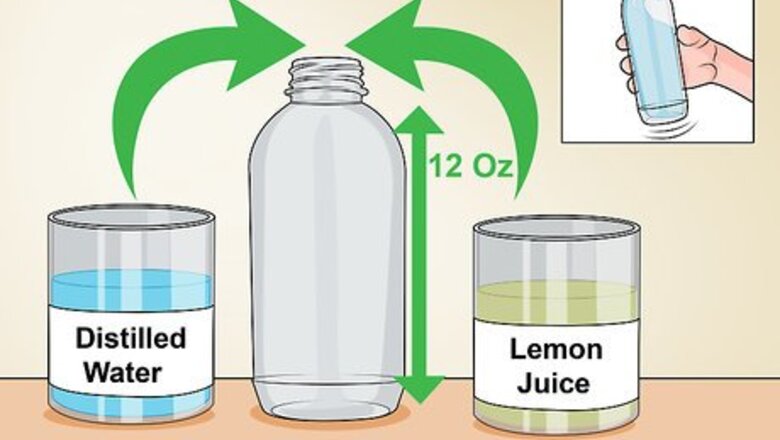
views
Preparing a Lemon Toner for Oily Skin
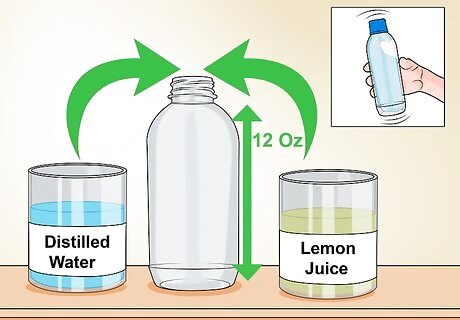
Combine the lemon juice and water. Add 1 cup (237 ml) of water and ½ cup (118 ml) of fresh lemon juice to a glass or plastic bottle. Shake the bottle well to ensure that the ingredients are well mixed. For best results, use filtered, distilled, or bottled water. Lemon juice can help remove excess oil, tighten pores, and kill bacteria. Be sure to use a bottle that can hold at least 12 ounces for the toner.

Dampen a cotton pad with the toner and apply it to your face. When you’re ready to use the toner, wet a cotton pad or ball with it. Gently stroke it over your face, paying special attention to areas where you get most oily. If you prefer, you can place the lemon toner in a spray bottle and mist your face with the toner. Allow your skin to absorb it before moving on your skin care routine. Toner is a great way to prep the skin for your other skincare products. Try to apply the toner right after your cleanser so it can break down any leftover residue.

Follow up with sunscreen during the day. While lemon juice can help improve the look of oily skin, it also lightly exfoliates, which can leave your face more sensitive to the sun. Protect your skin by applying a sunscreen with an SPF of at least 15 if you’ve applied the toner during the day.
Creating a Moisturizing Toner for Dry Skin
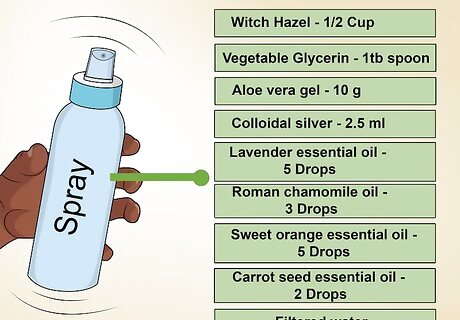
Mix all of the ingredients in a spray bottle. In a clean, plastic spray bottle, combine ¼ cup (59 ml) of witch hazel, 1 teaspoon (5 ml) of vegetable glycerin, 2 teaspoons (10 g) of aloe vera gel, ½ teaspoon (2.5 ml) of colloidal silver, 5 drops of lavender essential oil, 3 drops of roman chamomile essential oil, 5 drops of sweet orange essential oil, 2 drops of carrot seed essential oil, and enough filtered water to fill the bottle. Shake the bottle gently to mix all of the ingredients. The colloidal silver is an optional ingredient, but it helps preserve the toner so it lasts longer and treats skin conditions such as acne, rosacea, and psoriasis. Be sure to store the toner in a cool, dark spot. You can store it in the refrigerator to help it last longer, but it should be good for up to 6 months even at room temperature.

Spray onto a clean face. When you’re ready to use the toner, wash your face with your usual facial cleanser. Next, gently mist the toner over your face and wait 2 to 3 minutes for your skin to absorb it before moving on to the next step in your skincare routine. If you prefer, you can spray the toner on a cotton pad or square, and wipe it over your entire face.

Apply a moisturizer. After your skin has absorbed the toner, it’s important to hydrate your face. Use your usual moisturizer, and massage it into your skin to keep your skin smooth and supple. It’s all right if your skin is still slightly damp from the toner when you apply the moisturizer. That will help lock in the moisture.
Whipping Up an Apple Cider Vinegar for Acne-Prone Skin
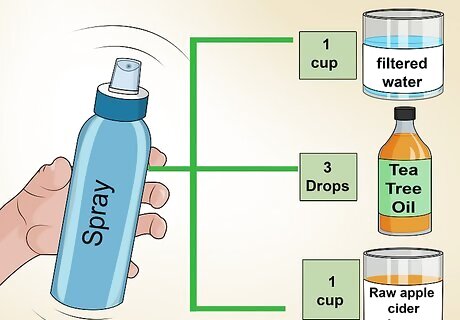
Combine all of the ingredients. In a glass or plastic bottle, mix together 1 cup (237 ml) of filtered water, 1 cup (237 ml) of raw apple cider vinegar, and 3 drops of tea tree oil. Shake the bottle gently to ensure that the ingredients are fully combined. Use an airtight container that can hold at least 16 ounces for the toner. The toner recipe calls for 1 part water and 1 part apple cider vinegar, so you can adjust it accordingly to make as much or as little as you’d like.

Wet a cotton pad with the toner and rub over your face. When you’re ready to use the toner, dampen a cotton square, ball, or pad with the mixture. Next, gently rub it over your entire face after washing it, paying particular attention to areas where you usually get acne. Don’t rinse the toner off. You can also store the toner in a spray bottle and mist it over your face if you prefer.

Use your usual acne treatment products. After you’ve applied the toner, wait 2 to 3 minutes so your skin can fully absorb it. Next, apply your usual acne treatment products, such as benzoyl peroxide or salicylic acid, to treat your breakouts.
Mixing Up a Rose Water Toner for Sensitive Skin
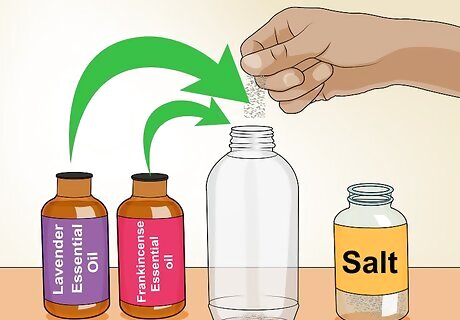
Add the salt and oils to a glass bottle. Drop a pinch of salt to the bottom of a 5 ounce or larger glass bottle. Next, add 3 drops of lavender essential oil and 3 drops of frankincense essential oil. The salt will help disperse the essential oils throughout the toner. If you don’t have lavender or frankincense essential oils, you can use 6 drops of your favorite essential oils instead. Just make sure that they aren’t oils that irritate your skin.
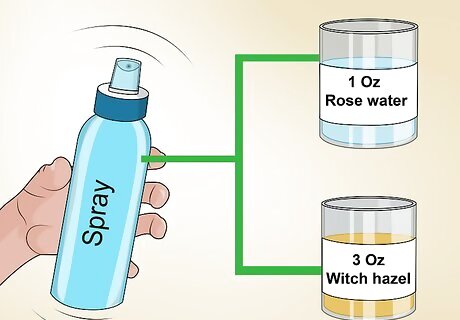
Mix in the witch hazel and rose water. With the salt and essential oils in the glass bottle, pour in 3 ounces (90 ml) of witch hazel and 1 ounce (30 ml) of rose water. Shake the bottle gently to mix all of the ingredients until they are thoroughly combined. The toner doesn’t need to be stored in the refrigerator, but it can be very refreshing to chill it during warmer months.
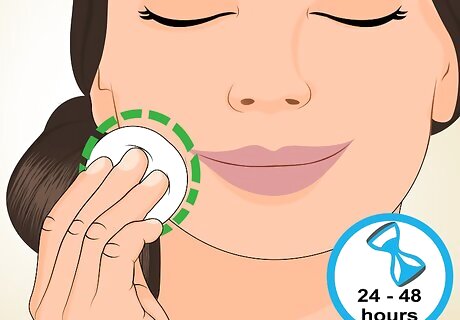
Test the toner on your skin to see how it reacts. If you have sensitive skin, you have to be careful about applying new products to it. To make sure that the toner will work for your skin, test a small amount of it on a small patch of skin, such as behind your ear or along your jaw. Wait 24 to 48 hours to see if you have a reaction. If you don’t, you can use the toner freely.

Apply the toner to a cotton ball or pad and run it over the face. After you’ve washed your face with your normal face wash, wet a cotton pad or ball with the toner. Gently run the cotton all over your face to apply the toner. Follow up with the rest of your usual skincare routine. If you prefer, you can store the toner in a spray bottle and spray on it on your face instead of using the cotton pads or balls.



















Comments
0 comment